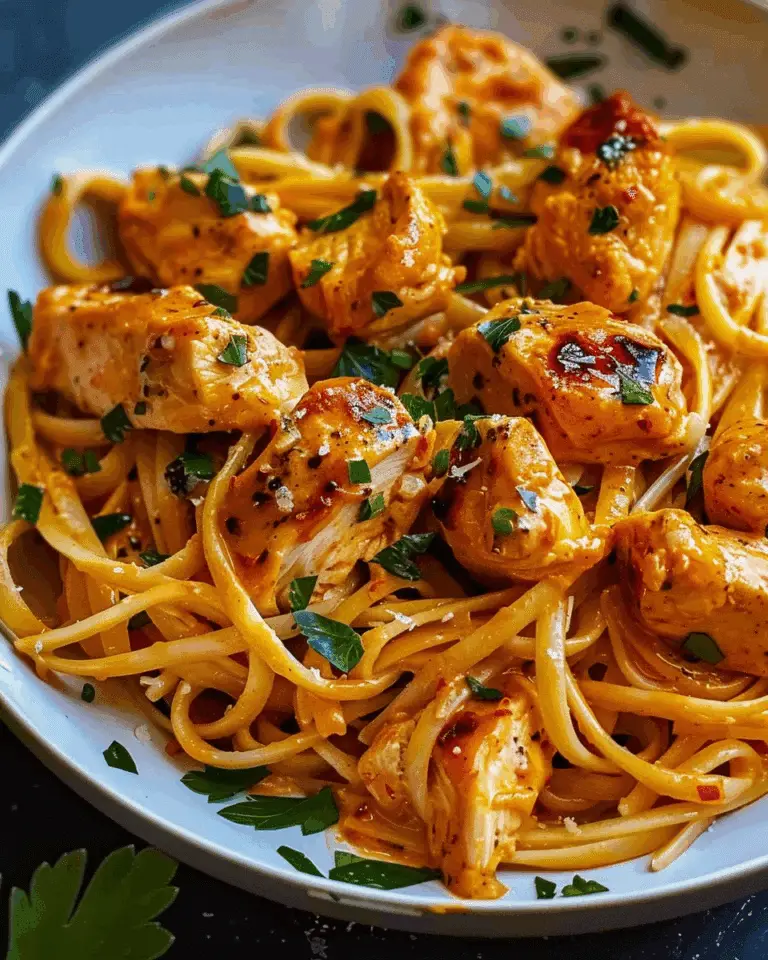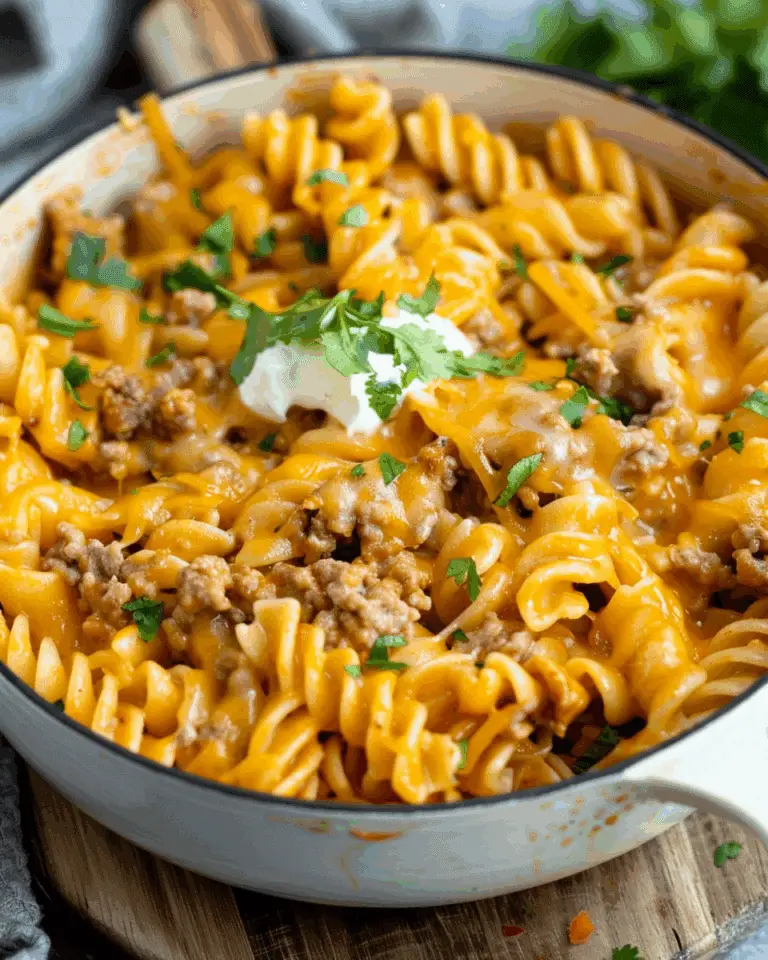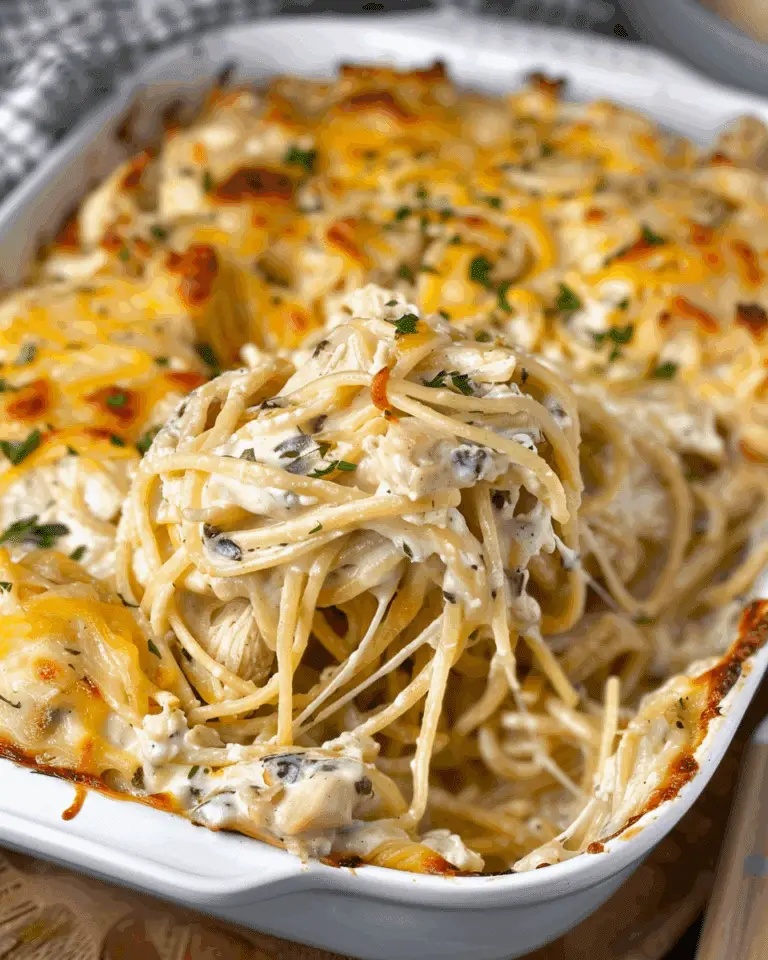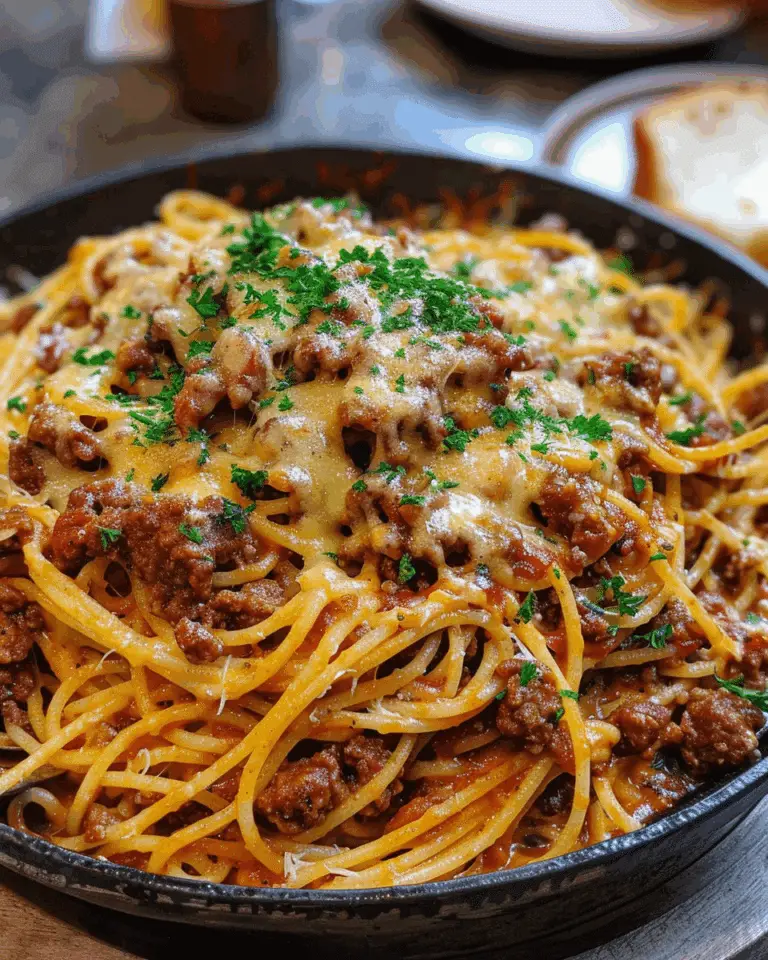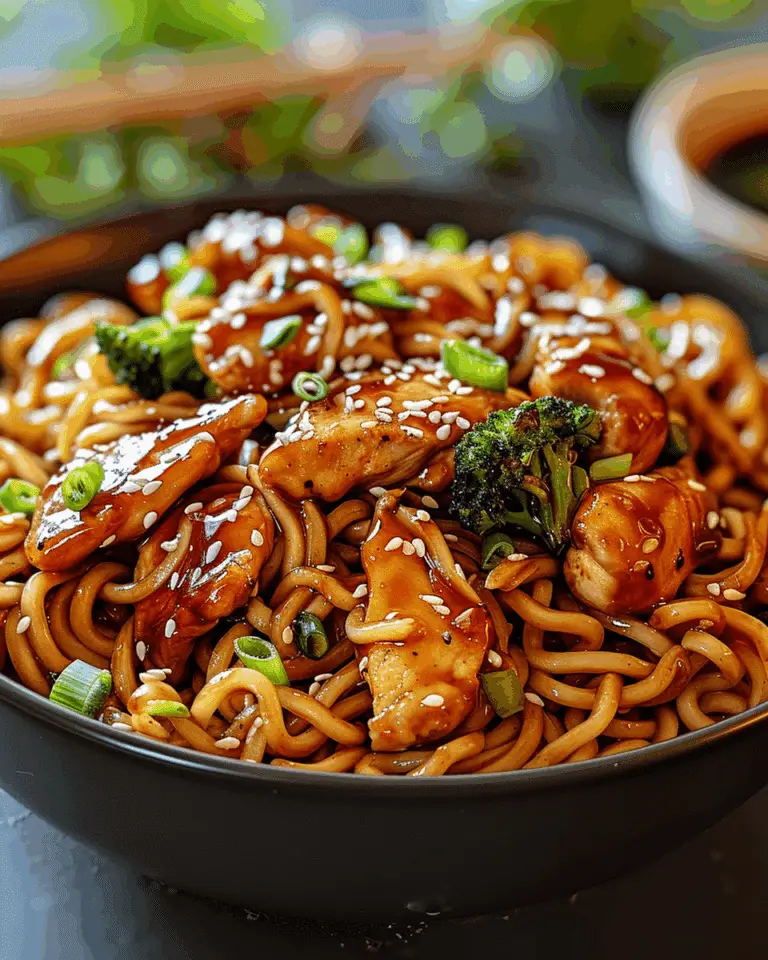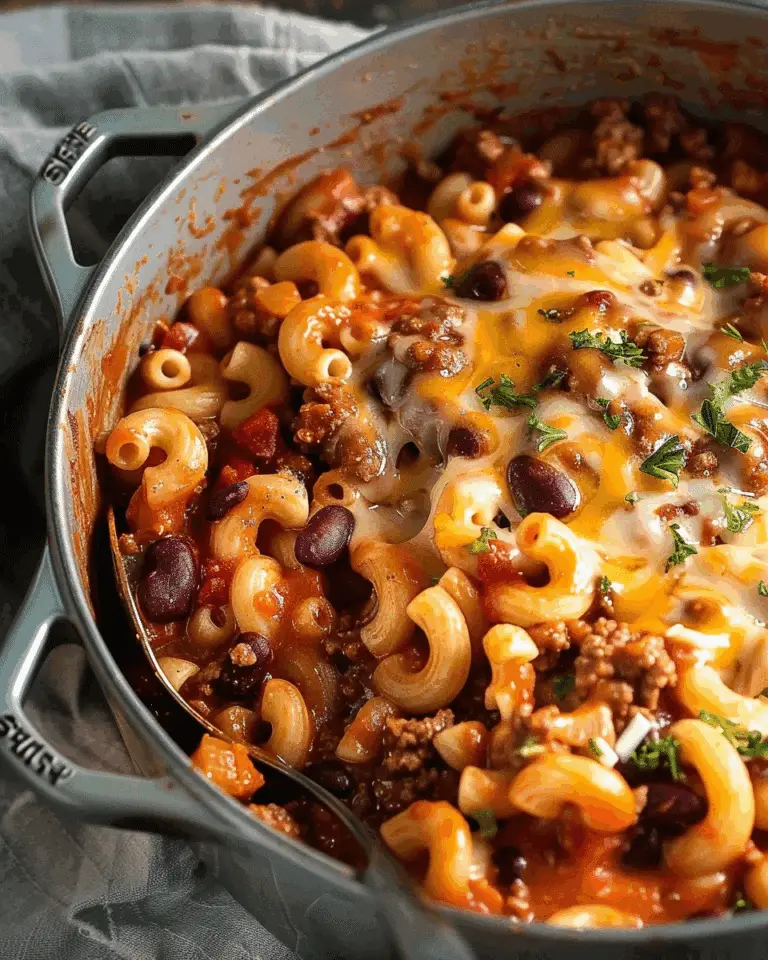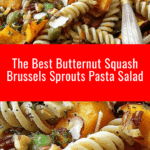This fall-inspired pasta salad is my go-to when I want something comforting, colorful, and packed with seasonal flavor. With roasted butternut squash, Brussels sprouts, crisp apples, creamy goat cheese, and a maple-dijon vinaigrette, this dish checks all the boxes for a cozy, satisfying meal or side. It’s vibrant, hearty, and full of texture—just what I crave in cooler months.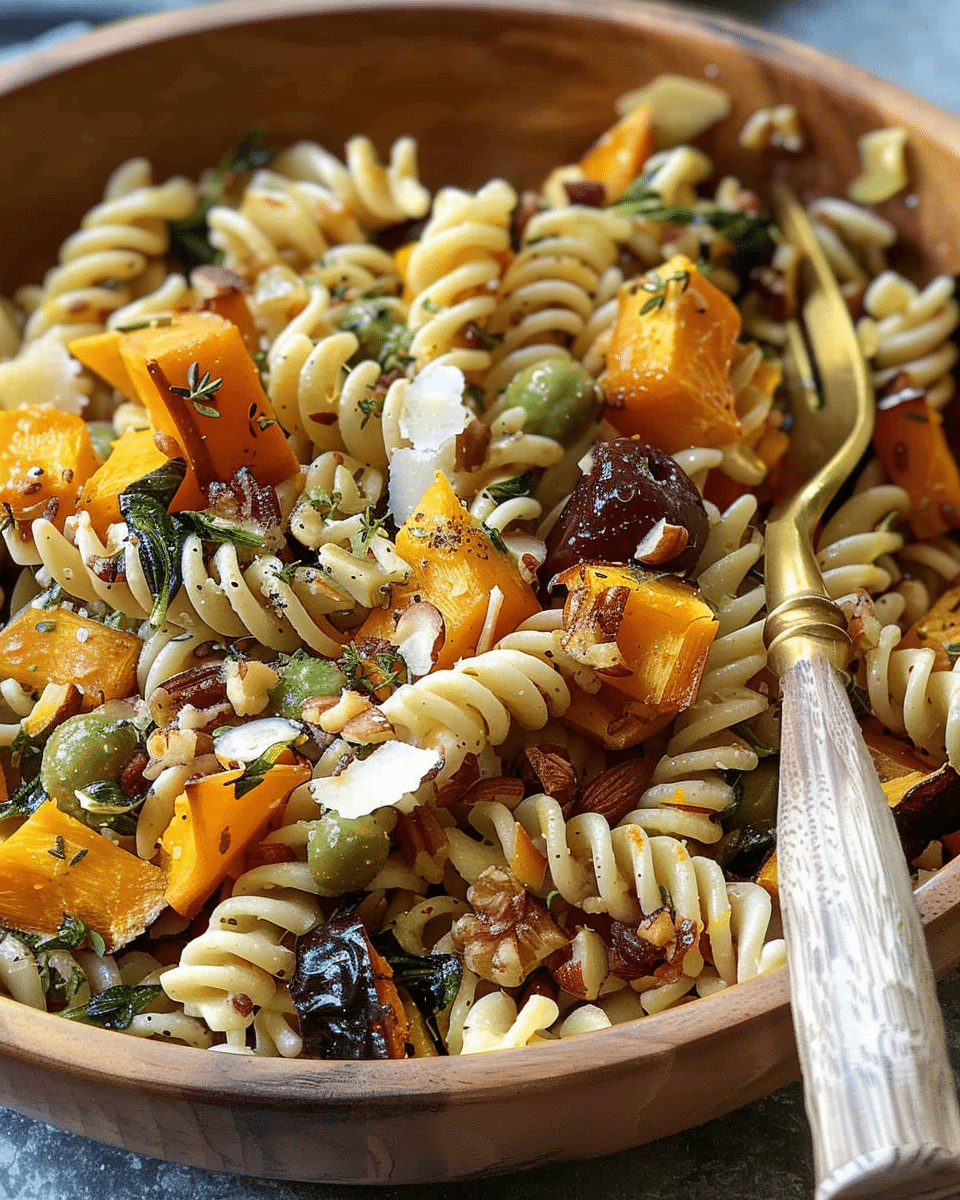
Why You’ll Love This Recipe
I love how this recipe brings together savory and sweet elements in such a balanced way. The caramelized roasted veggies pair beautifully with the sweetness of apples and the tang of goat cheese. The maple-dijon vinaigrette gives everything a warm, flavorful coating without being too heavy. Plus, it’s versatile enough to serve as a side dish, light lunch, or even a vegetarian main course. And the best part? I can prep parts of it ahead of time for easy assembly later.
Ingredients
(Here’s a tip: Check out the full list of ingredients and measurements in the recipe card below.)
-
8 oz dry pasta (rotini or similar)
-
2 cups Brussels sprouts, diced
-
2 cups butternut squash, diced
-
2 cups apple, diced (Honeycrisp suggested)
-
1 tablespoon fresh thyme, chopped (or 1 teaspoon dried thyme)
-
2 tablespoons extra-virgin olive oil
-
1 teaspoon kosher salt
-
½ teaspoon black pepper
-
4 oz goat cheese (or feta, for topping)
-
¼ cup dried cranberries (optional)
For the dressing:
-
⅓ cup extra-virgin olive oil
-
¼ cup balsamic vinegar
-
1 tablespoon Dijon mustard
-
1 tablespoon maple syrup
-
1 clove garlic, minced
-
½ teaspoon kosher salt
-
¼ teaspoon black pepper
Directions
-
I preheat the oven to 400 °F (200 °C) and line a baking sheet with greased parchment paper. Then I dice the butternut squash, Brussels sprouts, and apples.
-
I toss the Brussels sprouts and butternut squash with olive oil, thyme, salt, and pepper, then roast them for 20 minutes. After that, I push the veggies to one side of the pan, add the diced apples, and roast everything for another 10–15 minutes until tender.
-
While the veggies are roasting, I cook the pasta in salted boiling water according to the package directions, usually shaving off a minute or two for an al dente finish. I drain it, save a bit of pasta water, and toss it with a drizzle of olive oil to prevent sticking while it cools.
-
I make the dressing by whisking together the olive oil, balsamic vinegar, Dijon mustard, maple syrup, garlic, salt, and pepper until it’s smooth and emulsified.
-
Once everything is cooled, I combine the pasta, roasted veggies and apples, goat cheese, and cranberries in a large bowl. I pour on the dressing and toss it all together until it’s evenly coated.
-
If I’m making this in advance, I hold off on adding the goat cheese and dressing until just before serving to keep it tasting fresh.
Servings and timing
This recipe makes about 4 to 6 servings, depending on portion size. It takes 15 minutes to prep and 30 minutes to cook, bringing the total time to around 45 minutes. It works great as a hearty lunch or a flavorful side dish at dinner.
Variations
I like switching things up depending on what I have on hand. Sometimes I swap the goat cheese for feta or use a different type of pasta with ridges to hold onto the dressing. When I want to boost the protein, I toss in some cooked chickpeas or lentils. Adding sunflower or pumpkin seeds gives it a nice crunch, and I’ve also sprinkled in pomegranate seeds for a juicy pop of flavor. It’s easy to make it my own.
Storage/Reheating
Leftover salad stores well in an airtight container in the refrigerator for 3–4 days. I usually keep the goat cheese and dressing separate if I’m planning to store it, and only mix them in right before eating. I don’t reheat it, since it’s best enjoyed cold or at room temperature, but I do let it sit out for a bit before serving to bring out the flavors.
FAQs
How can I make this recipe vegan?
I simply skip the goat cheese or replace it with a vegan cheese alternative. Everything else in the recipe is already plant-based.
Can I use frozen butternut squash?
Yes, I can use frozen squash in a pinch. I just make sure to thaw and pat it dry before roasting to avoid excess moisture.
What’s the best pasta shape for this salad?
I like using rotini or any pasta with grooves or ridges because it holds onto the dressing and other ingredients better.
Can I make this ahead of time?
Absolutely. I roast the vegetables and make the dressing in advance, then assemble everything just before serving for the best texture and flavor.
What apples work best for this salad?
I love using Honeycrisp because they’re sweet and crisp, but Fuji or Gala apples also work well.
Conclusion
This fall pasta salad is everything I want in a seasonal dish: hearty, colorful, full of texture, and bursting with flavor. Whether I’m serving it as a main dish or a festive side, it never fails to impress—and it’s just as delicious the next day. It’s a recipe I return to again and again once autumn hits.
Print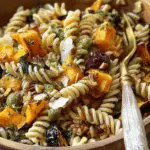
Fall Pasta Salad with Roasted Butternut Squash, Brussels Sprouts & Apples
- Prep Time: 15 minutes
- Cook Time: 30 minutes
- Total Time: 45 minutes
- Yield: serves about 4‑6
- Category: Appetizers & Side Dishes, Lunch
- Method: Roasting, Boiling, Tossing
- Cuisine: American
- Diet: Vegetarian
Description
A fall‑inspired pasta salad loaded with roasted butternut squash, Brussels sprouts, crisp apples, fresh thyme, and tossed with goat cheese and a maple‑dijon vinaigrette.
Ingredients
- 8 oz dry pasta (rotini or similar)
- 2 cups Brussels sprouts, diced
- 2 cups butternut squash, diced
- 2 cups apple, diced (Honeycrisp suggested)
- 1 tablespoon fresh thyme, chopped (or 1 teaspoon dried thyme)
- 2 tablespoons extra‑virgin olive oil
- 1 teaspoon kosher salt
- ½ teaspoon black pepper
- 4 oz goat cheese (or feta, for topping)
- ¼ cup dried cranberries (optional)
- For the dressing:
• ⅓ cup extra‑virgin olive oil
• ¼ cup balsamic vinegar
• 1 tablespoon Dijon mustard
• 1 tablespoon maple syrup
• 1 clove garlic, minced
• ½ teaspoon kosher salt
• ¼ teaspoon black pepper
Instructions
- Preheat the oven to 400 °F (200 °C). Prepare a baking sheet with greased parchment paper. Dice the butternut squash, Brussels sprouts, and apple.
- Toss the butternut squash and Brussels sprouts in olive oil, fresh thyme, salt, and pepper, then roast in the oven for 20 minutes. After 20 minutes, push veggies to one side of the pan, add the diced apples, and roast another 10‑15 minutes or until all are fork tender.
- While veggies are roasting, cook the pasta in salted boiling water according to package instructions (or 1‑2 minutes less for al dente). Drain, saving about a tablespoon of pasta water, toss pasta with a drizzle of olive oil or with a little pasta water, then let it cool.
- Make the maple‑dijon dressing by whisking together olive oil, balsamic vinegar, Dijon mustard, maple syrup, minced garlic, salt, and pepper.
- Once roasted veggies and apples are cooled, assemble salad: in a large bowl, combine cooled pasta, roasted veggies & apples, goat cheese, and dried cranberries (if using). Pour on dressing and toss to coat everything evenly.
- If preparing in advance, wait to add goat cheese and dressing until just before serving to maintain freshness.
Notes
- Add a bit of olive oil to the pasta right after draining to prevent sticking.
- If making ahead, roast vegetables and make dressing in advance; add goat cheese and dressing just before serving.
- Choose a pasta shape with grooves or ridges to hold more dressing.
- Substitute fresh thyme with 1 tsp dried thyme if that’s what you have.
- Vary the recipe by adding seeds (pumpkin, sunflower), pomegranate seeds, or a plant‑based protein to make it more filling.
- Vegetables storage: leftover salad keeps in the fridge for 3‑4 days.

